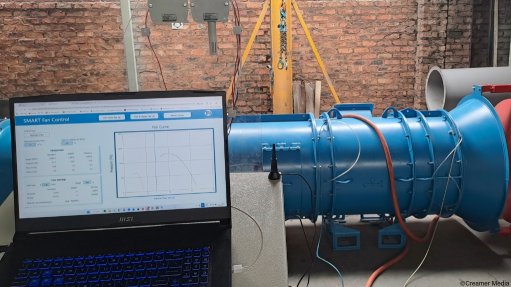Is insolence as deserving of dismissal as insubordination?


GROSS INSUBORDINATION An employer is entitled to dismiss an employee if the refusal to carry out a lawful and reasonable instruction is of a deliberate and serious nature
Photo by Reuters
Despite the Commission for Conciliation, Mediation and Arbitration’s (CCMA’s) findings that insolence and insubordination might overlap in certain instances, it is yet to be clarified whether all instances of insolence that warrant dismissal must contain elements of insubordination, highlights labour relations advisory Labourwise director Jan Truter.
He speculates, however, that any instances of workplace insolence deserving of dismissal are likely to consistently contain elements of insubordination, as such instances will always involve directly challenging the authority of a boss.
Truter cites the Labour Appeal Court’s (LAC’s) case in December 2014 of Palluci Home Depot vs Herskowitz as an example of insubordination and insolence overlapping.
Palluci Home Depot, after buying out a family business, had encountered instances of hostile behaviour from the daughter of the previous owners, who still worked at the business.
The LAC found that the previously prevalent perception that insubordination had been limited to the refusal to comply with instructions was incorrect and that even in the absence of a direct instruction, a situation might constitute insubordination.
Truter highlights the degree of elucidation that the case provided in terms of insubordination, as the LAC had stated that insubordination could be present when disrespectful conduct posed a deliberate and serious challenge to, or defiance of, the employer’s authority, even where there was no indication that an instruction had been given and subsequently defied.
Subordination is crucial to the functioning of a business, as it culminates in the stability and efficiency achieved from effective managerial control, he remarks. Truter suggests that insolence may amount to insubordination if a rude remark towards a manager, for example, hampers achieving that stability and efficiency.
Crucially, subordination is one of the pillars on which the employment relationship rests, says Truter, adding that workers are employed by those who lawfully own the business and, therefore, they fall under a chain of command designated by the business owner.
He notes that refusal to carry out an employer’s lawful and reasonable instruction amounts to insubordination and explains that the employer is entitled to dismiss an employee if such refusal is of a deliberate and serious nature, termed ‘gross insubordination’.
In the case of Palluci Home Depot vs Herskowitz, the LAC noted that it was not essential for an instruction to be given or disobeyed to establish that the employer’s authority had been challenged.
While the CCMA and the LAC found that Herskowitz had been fairly dismissed, Herskowitz took the findings on review and the LAC subsequently concluded that, while the employee’s behaviour had been manifestly insolent, it did not constitute a serious, persistent and deliberate challenge to the employer’s authority.
Therefore, following Herskowitz’s appeal, the LAC stated that dismissal would be justified only in cases of serious and deliberate acts, irrespective of whether they were categorised as insolent or insubordinate.
Further, the LAC found that the employer had made an illegal deduction from the employee’s salary and had acted in a provocative manner when the employee wanted to address the matter.
Truter highlights that taking appropriate disciplinary action ultimately depends on how wilful and serious the employee’s misconduct has been, regardless of how it is classified. This illustrates the importance of taking into account the particular circumstances of each case.
The LAC has only recently taken meaningful strides to clarify the interplay between insolence and insubordination and the level of insolence that would amount to a fair dismissal, he adds, concluding that more cases will help to further clarify the law in this regard.
Article Enquiry
Email Article
Save Article
Feedback
To advertise email advertising@creamermedia.co.za or click here
Press Office
Announcements
What's On
Subscribe to improve your user experience...
Option 1 (equivalent of R125 a month):
Receive a weekly copy of Creamer Media's Engineering News & Mining Weekly magazine
(print copy for those in South Africa and e-magazine for those outside of South Africa)
Receive daily email newsletters
Access to full search results
Access archive of magazine back copies
Access to Projects in Progress
Access to ONE Research Report of your choice in PDF format
Option 2 (equivalent of R375 a month):
All benefits from Option 1
PLUS
Access to Creamer Media's Research Channel Africa for ALL Research Reports, in PDF format, on various industrial and mining sectors
including Electricity; Water; Energy Transition; Hydrogen; Roads, Rail and Ports; Coal; Gold; Platinum; Battery Metals; etc.
Already a subscriber?
Forgotten your password?
Receive weekly copy of Creamer Media's Engineering News & Mining Weekly magazine (print copy for those in South Africa and e-magazine for those outside of South Africa)
➕
Recieve daily email newsletters
➕
Access to full search results
➕
Access archive of magazine back copies
➕
Access to Projects in Progress
➕
Access to ONE Research Report of your choice in PDF format
RESEARCH CHANNEL AFRICA
R4500 (equivalent of R375 a month)
SUBSCRIBEAll benefits from Option 1
➕
Access to Creamer Media's Research Channel Africa for ALL Research Reports on various industrial and mining sectors, in PDF format, including on:
Electricity
➕
Water
➕
Energy Transition
➕
Hydrogen
➕
Roads, Rail and Ports
➕
Coal
➕
Gold
➕
Platinum
➕
Battery Metals
➕
etc.
Receive all benefits from Option 1 or Option 2 delivered to numerous people at your company
➕
Multiple User names and Passwords for simultaneous log-ins
➕
Intranet integration access to all in your organisation



















